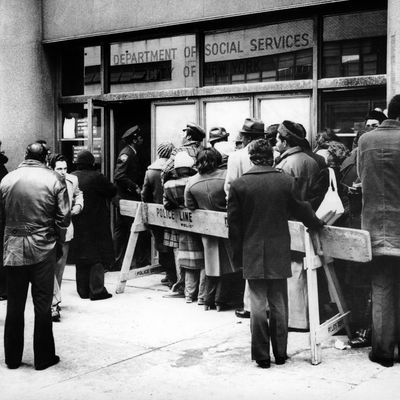
This past weekend, after a family funeral in Georgia, I was cornered by a conservative in-law who among other things wanted me to understand that black folks were being discouraged from working by the exceptional generosity of “welfare.” In the name of familial comity I bit my tongue and changed the subject of conversation to the upcoming college football season.
With this aborted conversation in mind, I was naturally interested in a post at FiveThirtyEight this week that examined the changes in how “welfare” was structured in the 20 years since the landmark 1996 legislation, which among other things gave the states unprecedented control over the use of federal “temporary assistance for needy families” dollars.
The big trend (aside from the deterioration of the value of TANF block grants by the growing population of Americans in general and of people living in poverty in particular) has been a radical reduction in the percentage of funds devoted to cash assistance by most states, in favor of programs aimed at everything from discouraging teen pregnancy to addressing substance abuse and domestic violence. You can debate the value of such programs all day long, but none of them will directly put money in the hands of poor people so that they can easily and happily forgo a paycheck.
As it happens, the in-law who raised the welfare issue with me is a resident of South Carolina. Right now, the Palmetto State devotes about 8 percent of its TANF money to direct cash assistance, as compared to a national average among the states of 27 percent; it ranks 47th in the percentage of “welfare” money going into the pockets of beneficiaries. How generous is South Carolina to those who do receive cash benefits? According to the most recent figures available, the maximum monthly cash benefit in South Carolina for a single parent raising two children is $216. That’s a buck a month more than Alabama, and also more than Arkansas, Mississippi, and Tennessee. But nobody’s buying any “welfare Cadillacs.” And anybody who’d rather live off that — keeping in mind that benefits are time-limited, too — than work is in need of psychiatric assistance rather than “welfare.”
Yes, it’s true that other non-cash benefits that provide living support, notably SNAP (a.k.a. food stamps), are still available and have been used much more widely — by the working poor as well as the non-working poor — since the economic collapse of 2008. But the fact remains that the most important income support, and in many places the only one coming in the form of disposable income, is the refundable Earned Income Tax Credit, which is available only to people who work. Racist stereotypes about welfare will obviously linger regardless of the facts. But if people aren’t working, it’s probably not because public assistance is such a great deal.






























